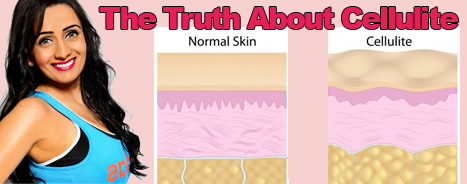Dal Dhaliwal Informs Readers About Cellulite

What is Cellulite?
Cellulite is a condition that can make the appearance of the skin look dimpled, lumpy in appearance. Cellulite is a collection of fat that pushes the connective tissue beneath the skin – which causes the changes in appearance of the skin. It can be most noticeable on the thighs, buttocks and stomach and usually occurs after puberty.
Although cellulite can affect both sexes, it is much more common in females and can especially affect women over 35 years old. It can also be seen in slim women. Cellulite is more common in women than men because of differences in the way fat, muscle and connective tissue is distributed under the skin.
Is Cellulite Fat?
Cellulite is not ‘normal’ fat. It is the structure of the overlying skin and of the underlying connective tissue that determines whether a given area has a smooth or rippled appearance. Cellulite may appear to be worse in appearance depending on the amount of body fat proportion in affected areas. However, the thinnest women can also be affected. The reason for this is that while fat deposits do exacerbate the condition, fat itself is not the primary cause. Gender, genes, age, and the amount of fat on the body are all associated with the amount of cellulite you have or how visible it is.
What causes Cellulite?
The real causes of cellulite are not well understood, but there are several theories to the causes;
Hormonal factors- Hormones play an important role in cellulite development. Hormonal changes, such as overproduction of estrogen, sedentary lifestyle, and lack of physical activities are also responsible for the production of Cellulite.
Genetics – Certain genes are required for cellulite development. Genes may predispose an individual to particular characteristics associated with cellulite, such as gender, race, slow metabolism, distribution of fat just underneath the skin, and circulatory insufficiency.
Diet – Over consumption of saturated fats and sugary foods, carbohydrates, or salt and too little fibre can also lead to greater amounts of cellulite.
Lifestyle factors – Cellulite may be more common in smokers, those who do not exercise, and those who sit or stand in one position for long periods of time.
Clothing – underwear such as tight elastic across the buttocks (limiting blood flow) may contribute to the formation of cellulite.
How can Cellulite be removed?
There are many methods and therapies suggested to remove cellulite or improve the appearance of affected areas. However, none have been supported in the scientific or medical literature. Therefore we do not know how successful any of these methods really are at removing Cellulite.
How can Cellulite be prevented?
Exercise will help Cellulite in many different ways. It will help to keep your body fat levels low. The best way to decrease body fat is to eat fewer calories and exercise more. A combination of proper eating habits, aerobic exercises and strength training are the best things you can do to fight against cellulite. Exercise will also help to improve circulation and muscle tone in cellulite-prone areas.
Changing your diet – A well balanced diet can help reduce cellulite. Avoid junk foods and fast foods. Always keep yourself hydrated and drink water throughout the day.
Quick Fixes/ Miracle Cures – There are a few cellulite treatments and procedures that can improve the appearance of the skin – But none are a proven cure for cellulite. In fact, most of the cellulite ‘creams, potions and solutions’ are little more than expensive placebos. It’s best to save your hard-earned cash!
Yours in Health, Fitness and Happiness.
Dal Dhaliwal – Founder Of Body Perfect Personal Training Studio
www.bodyperfectpt.com – Twitter: @daldhaliwalPT – Facebook: Dal Dhaliwal







































